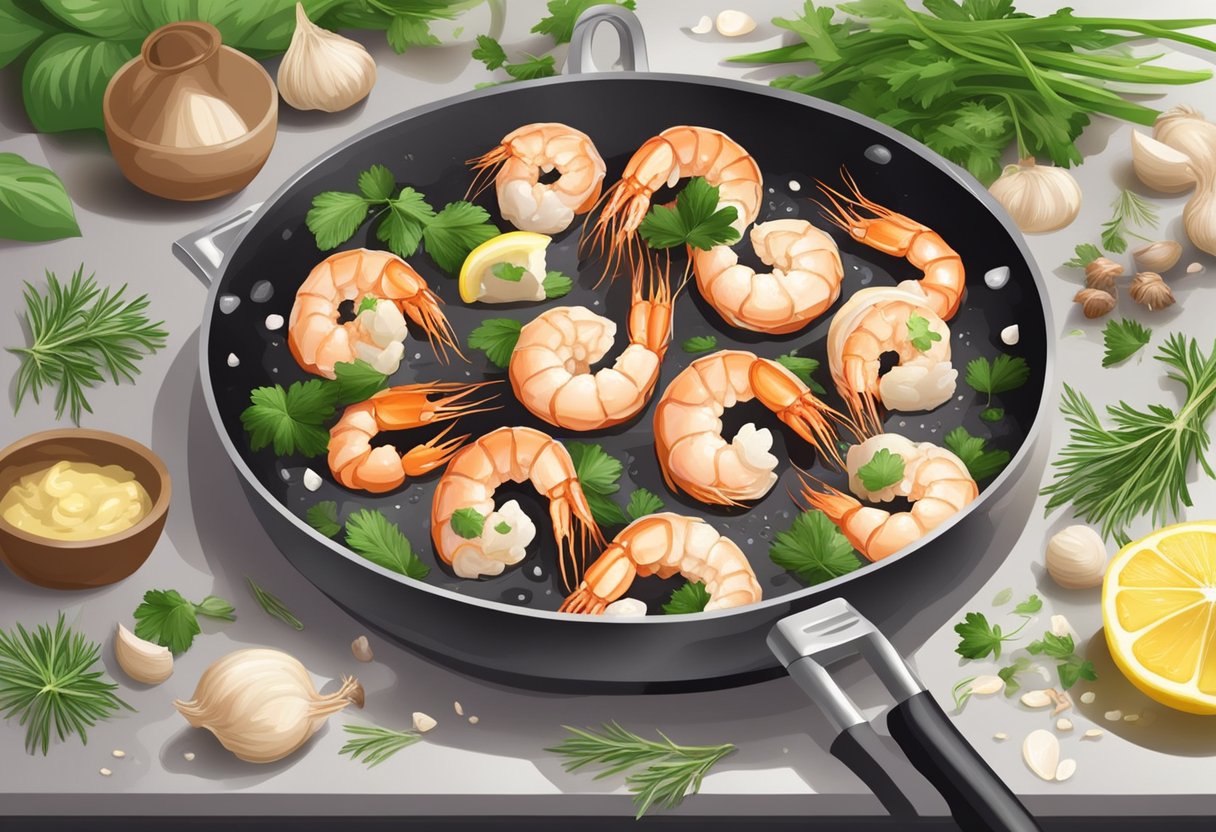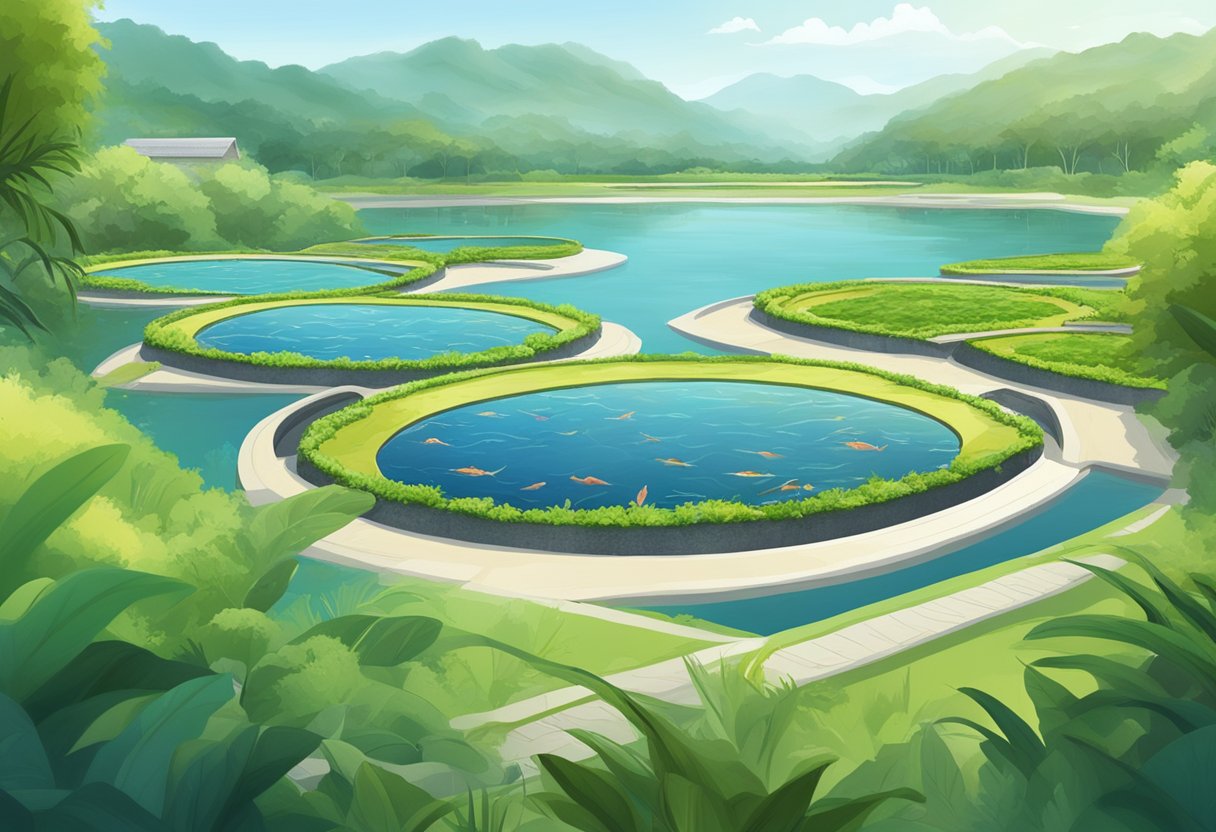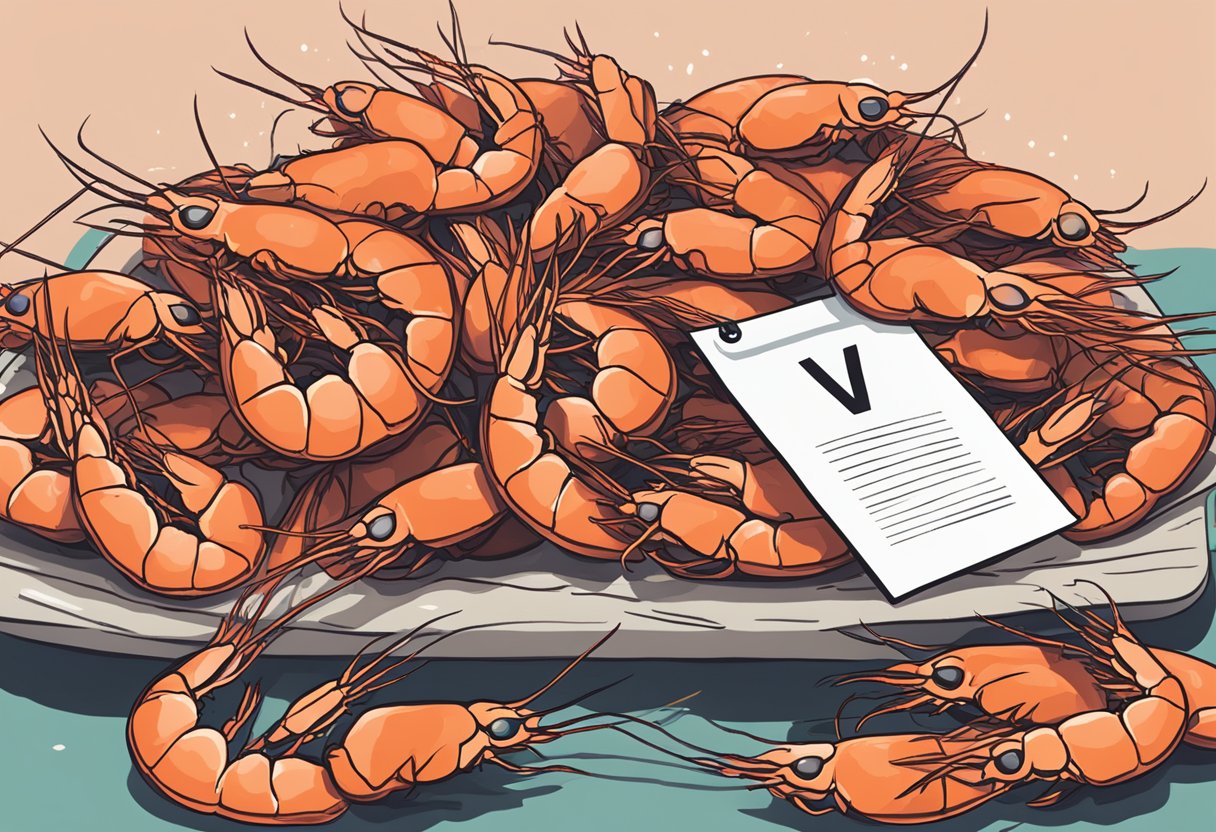Vannamei prawns, also known as Pacific white shrimps or whiteleg shrimps, are a popular seafood item that can be found in many different dishes. These prawns are native to the eastern Pacific Ocean and are commonly caught or farmed for food. They are known for their mild and sweet flavour, which makes them a versatile ingredient in many different cuisines.
One of the most popular culinary uses for vannamei prawns is in stir-fries, curries, and other Asian dishes. They can also be grilled, boiled, or fried and served as a main course or appetizer. Due to their mild flavour, vannamei prawns pair well with a variety of ingredients, such as garlic, ginger, chilli, and citrus.
If you are interested in learning more about vannamei prawns, you may be wondering about their sustainability and how they are farmed. In recent years, there has been a growing concern about the environmental impact of aquaculture, and many consumers are looking for more sustainable seafood options. In the next section, we will explore the topic of aquaculture and sustainability as it relates to vannamei prawns.
Key Takeaways
- Vannamei prawns are a versatile seafood ingredient that can be used in many different dishes.
- These prawns are commonly farmed for food, and there is growing concern about the sustainability of aquaculture.
- When cooking with vannamei prawns, they pair well with a variety of ingredients, such as garlic, ginger, chilli, and citrus.
Culinary Uses and Recipes

Cooking Techniques
Vannamei prawns are a versatile seafood product that can be cooked in a variety of ways. They can be grilled, fried, steamed, or boiled. Grilling and frying are popular methods that can bring out the best flavour in the prawns while retaining their delicate and tender texture.
Popular Dishes
Vannamei prawns are a popular ingredient in many dishes, including curries, stir-fries, salads, and shrimp cocktails. They are also commonly used in dumplings and rice dishes. The sweet and mild taste of the prawns makes them a versatile ingredient that can be used in a variety of dishes.
Flavour Profiles
Vannamei prawns have a sweet taste that is enhanced by the addition of garlic and chilli. They are delicate in texture and have a tender mouthfeel that makes them a popular ingredient in many dishes.
Pairing with Ingredients
Vannamei prawns pair well with a variety of ingredients, including noodles, rice, salads, and dumplings. They also go well with a variety of sauces and broths, including those made with roe.
Preparation Tips
When preparing vannamei prawns, it is important to ensure that they are fresh and of high quality. Frozen vannamei prawns can also be used for convenience, but it is important to ensure that they are of premium quality and sustainably farmed. When cooking, it is important to not overcook the prawns as this can result in a tough and rubbery texture.
Health Benefits
Vannamei prawns are a good source of protein and are low in fat. They are also a good source of omega-3 fatty acids, which are beneficial for heart health.
Serving Suggestions
Vannamei prawns can be served in a variety of ways, including on skewers, in salads, or as part of a stir-fry. They are also a popular ingredient in dim sum and can be served in a variety of sauces.
Cultural Significance in Cuisine
Vannamei prawns are a popular ingredient in Singaporean cuisine, where they are commonly used in dishes such as Hokkien mee and gao chap hei. They are also a popular ingredient in Indonesian cuisine.
Shopping for Quality
When shopping for vannamei prawns, it is important to ensure that they are fresh and of high quality. They can be purchased at wet markets, grocery stores, and wholesale markets.
Storage and Handling
Vannamei prawns should be stored in the refrigerator and used within a few days of purchase. Frozen vannamei prawns should be thawed in the refrigerator before use.
Cooking for Occasions
Vannamei prawns are a popular ingredient for special occasions and can be served in a variety of dishes, including shrimp cocktails and curries.
Street Food Variations
Vannamei prawns are a popular ingredient in street food in Singapore, where they are commonly served on skewers.
Home Cooking Trends
Vannamei prawns are a popular ingredient in home cooking and can be used in a variety of dishes.
Restaurant Preparations
Vannamei prawns are a popular ingredient in many restaurants and can be served in a variety of dishes, including stir-fries and salads.
Innovative Recipes
Vannamei prawns can be used in innovative recipes, such as prawn dumplings and prawn noodle soup.
Comparison with Other Prawns
Vannamei prawns are similar in texture and flavour to tiger prawns and king prawns. They are also similar to red leg prawns in terms of their firm texture and bouncy mouthfeel.
Texture and Mouthfeel
Vannamei prawns have a delicate and tender texture that is similar to other shellfish. They have a sweet taste that is enhanced by the addition of garlic and chilli.
Sauces and Marinades
Vannamei prawns can be served with a variety of sauces and marinades, including those made with roe and chilli.
Cooking for Dietary Needs
Vannamei prawns are a good source of protein and are low in fat, making them a good choice for those following a healthy diet.
Seasonal Variations
Vannamei prawns are available year-round and can be purchased fresh or frozen for convenience.
Aquaculture and Sustainability

When it comes to vannamei prawn farming, aquaculture and sustainability go hand in hand. As demand for seafood continues to rise, it is important to ensure that farming practices are both environmentally responsible and economically viable in the long term. Here are some key factors to consider:
Farming Practices
Vannamei prawns are typically farmed in ponds or tanks, with some operations using recirculating aquaculture systems (RAS) to conserve water and reduce waste. Hatcheries play an important role in producing healthy juvenile prawns for the industry. Feeds are an essential component of aquaculture, and sustainability-minded farmers are increasingly turning to alternative protein sources to reduce their reliance on wild-caught fish.
Environmental Impact
Like all forms of aquaculture, vannamei prawn farming has an environmental impact. Ponds and tanks can have an impact on local water quality, and effluent from farms can contribute to eutrophication and other environmental problems. However, well-managed farms can minimise their impact on the environment and even provide ecosystem services such as habitat creation and carbon sequestration.
Disease Management
Disease is a major challenge for vannamei prawn farmers, with white spot syndrome, taura syndrome, and baculoviral midgut gland necrosis being among the most common and devastating diseases. Farmers must implement strict biosecurity measures and use disease-resistant strains to prevent outbreaks and minimise losses.
Sustainability Initiatives
Sustainability initiatives such as certification schemes and best management practices can help ensure that vannamei prawn farming is conducted in an environmentally and socially responsible manner. The Aquaculture Stewardship Council (ASC) and Global Aquaculture Alliance (GAA) are two leading certification bodies that promote sustainable aquaculture practices.
Global Production and Trade
Vannamei prawns are farmed in many countries around the world, with the largest producers being in Asia and Latin America. Ecuador is the world's largest exporter of vannamei prawns, followed by the Mexican state of Sonora and northern Peru. The industry is an important source of income and employment for many communities.
Economic Importance
Vannamei prawns are a high-value seafood product that is in strong demand in many markets around the world. Sustainably farmed, high-quality prawns can command a premium price and offer consumers a convenient and delicious option. The industry also provides economic benefits to many countries through exports and job creation.
Innovations in Aquaculture
The vannamei prawn industry is constantly evolving, with new technologies and practices being developed to improve efficiency, reduce environmental impact, and increase profitability. Recirculating aquaculture systems, genetic selection, and alternative protein sources are just a few examples of innovations that are changing the face of the industry.
Market Trends
Consumer demand for sustainably farmed, high-quality seafood products is on the rise, and the vannamei prawn industry is no exception. Premium, fresh, and convenient products are particularly sought after, and many companies are responding by offering value-added products and innovative packaging solutions.
Quality Standards
Quality is a key consideration for vannamei prawn farmers, and many companies have implemented strict quality control measures to ensure that their products meet the highest standards. Freshness, flavour, texture, and appearance are all important factors that can influence consumer preferences.
Certifications and Regulations
Certification schemes and regulations can help ensure that vannamei prawn farming is conducted in a responsible and sustainable manner. The Aquaculture Stewardship Council (ASC) and Global Aquaculture Alliance (GAA) are two leading certification bodies that promote sustainable aquaculture practices.
Consumer Awareness
Consumers are becoming increasingly aware of the environmental and social impacts of their purchasing decisions, and many are choosing to support sustainably farmed seafood products. Companies that can demonstrate their commitment to sustainability are likely to be more successful in the marketplace.
Local vs Imported
Consumers may have a preference for locally sourced products, but imported vannamei prawns can offer a more affordable and convenient option. It is important to consider the environmental and social impacts of both local and imported products when making purchasing decisions.
Challenges in Aquaculture
Vannamei prawn farming faces many challenges, including disease, environmental impact, and economic viability. However, with the right management practices and innovations, these challenges can be overcome.
Breeding and Genetics
Genetic selection is an important tool for improving the disease resistance and growth rates of vannamei prawns. Hatcheries play a crucial role in producing high-quality juvenile prawns for the industry.
Future of Vannamei Prawn Farming
The future of vannamei prawn farming looks bright, with increasing demand for sustainably farmed, high-quality products. Innovations in aquaculture and genetic selection are likely to play an important
Frequently Asked Questions

What's the difference between white prawns and tiger prawns?
White prawns and tiger prawns are two different species of prawns. White prawns are also known as vannamei prawns and are usually smaller in size compared to tiger prawns. They have a sweeter and more delicate taste, while tiger prawns have a firmer texture and a stronger flavour.
How do you cook vannamei prawns for the best flavour?
Vannamei prawns are versatile and can be cooked in many ways. To get the best flavour, it's important to not overcook them. Boiling, grilling, and stir-frying are popular methods of cooking vannamei prawns. They can also be used in soups, stews, and curries.
Where can I find vannamei prawns for sale?
Vannamei prawns are widely available in supermarkets and seafood markets. You can also find them online from seafood suppliers. Make sure to choose a reputable supplier that sells fresh and sustainably sourced vannamei prawns.
What's the going rate for vannamei prawns these days?
The price of vannamei prawns can vary depending on the size and quality. On average, they can cost between £10 to £20 per kilogram. However, prices can fluctuate depending on the season and market demand.
Are vannamei prawns considered healthy to eat?
Vannamei prawns are a good source of protein and low in fat. They are also rich in omega-3 fatty acids, which are beneficial for heart health. However, it's important to note that they can be high in cholesterol, so it's best to consume them in moderation.
What are common diseases that affect vannamei prawn populations?
Vannamei prawns are susceptible to various diseases, including white spot syndrome virus, yellow head virus, and Taura syndrome virus. These diseases can cause significant damage to prawn populations and can be difficult to control. It's important for prawn farmers to implement strict biosecurity measures to prevent the spread of disease.

